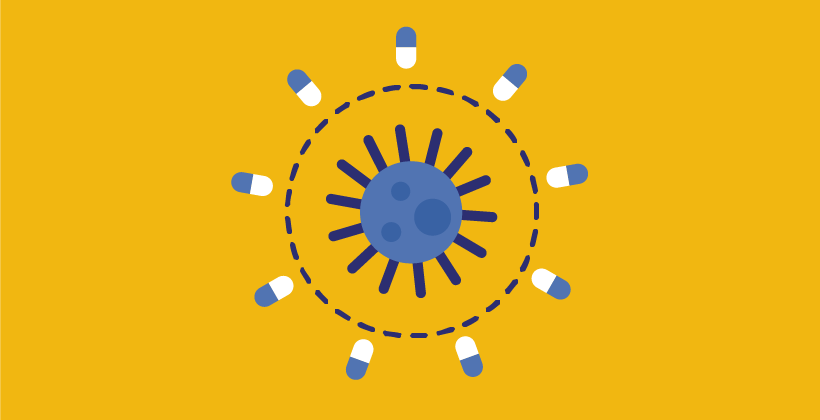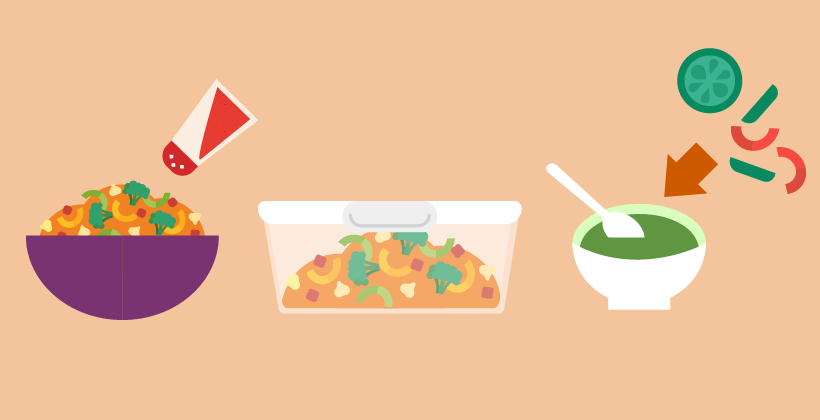The Health Benefits of Honey and Its Nutritional Value
Last Updated : 14 January 2020Honey is a natural ingredient used for its sweetness, energy and potential health benefits. It is mainly used for human consumption (but also in some cosmetics) either as pure honey or as an ingredient in other food products such as desserts, cereals and juices. There are hundreds of different honey types such as clover, acacia or manuka, depending on the botanical origin. This article explores how honey is made, describes its composition, and discusses research on its reported health effects.
How is honey made?
The journey from bee to bottle begins with flower nectar. Honeybees collect the nectar and enzymes in bee saliva break down the sugar into glucose and fructose which is stored in honeycombs to feed the hive over the winter. In the honeycomb, excess water evaporates through constant fanning from the bee’s wings. The resulting thick, sticky liquid is what we know as honey (see Table 1 for composition). 1
The European Union’s largest honey yields are found in Spain, Germany, Romania and Hungary. 2 However, as successful honey production depends on the honeybee thriving, it is of concern that Europe is seeing a significant decline in bee colonies (21% in the winter 2016/2017 alone). 3
The importance of bees
Honeybees not only produce honey but undertake an important role as crop pollinators. Given that 84% of the EU’s crops depend on pollination, the European Commission developed a strategy for honeybee health. 4 Multiple factors contribute to the decline in bees; one of which may be pesticides, which prompted the European Food Safety Authority (EFSA) to issue guidance on assessing the potential risks of pesticides to bees and more recently work towards the development of a database to actively collect information on bee health in Europe. 4, 5
The different types of honey
There are over 300 different types of honey worldwide.1 They differ in colour, aroma and flavour depending on the plant source where bees collect nectar. Some of the most well-known types of honey are manuka and acacia honey. 1
Honey can be broadly categorised into raw and processed honey. 1 When honey gets extracted from the beehive, it usually gets strained to remove wax and other non-honey particles. It is then available in its raw honey form which can be further heated and bottled to be available as processed honey, the form which is most commonly available in supermarkets. The heating and bottling process removes potential pathogens, but also the vitamins and antioxidants present in raw honey.
The nutritional composition of honey
Season, environmental conditions, processing techniques and varieties of flower nectar can all influence the composition of honey but, essentially, the main nutritional constituents are carbohydrates (simple sugars: fructose and glucose – find more information in our ‘Carbohydrates and its functions’ article). In addition to water, honey contains very small amounts of protein, vitamins, minerals, trace elements, enzymes and polyphenols, including flavonoids from pollen, which can help identify the honey origin. 6 The compositional criteria for honey are regulated by the European Council Directive 2001/110/EC of 20th December 2001 and specifies that the maximum water content of honey must be 20% for it to be an authentic food product (see also Table 1).
Table 1. Nutritional composition of honey* 8
| Per 100 g | Per 20 g serving |
Energy | 288 kcal/1229 kJ | 58 kcal/246 kJ |
Fat (g) | 0 | 0 |
Carbohydrate (g) | 76.4 | 15.3 |
- fructose (g) | 41.8 | 8.4 |
- glucose (g) | 34.6 | 6.9 |
Protein (g) | 0.4 | 0.08 |
Other constituents | ||
Water (g) | 17.5 | 3.5 |
*based on analysis of 8 samples of assorted types.
Honey is typically a smooth liquid containing imperceptible tiny crystals. However, factors such as its origin, low storage temperature, longer storage time and higher glucose content, can all lead to crystallisation; larger crystals form and the texture becomes crunchy. The process can be momentarily reversed by gentle heating. However, heating and filtering of honey (to purify) may negatively affect its properties by for example darkening the colour, destroying enzymes, and removing health-beneficial antioxidants.
Health benefits: is honey good for you?
Honey has been used for millennia in traditional medicine for its potential antibacterial, anti-inflammatory and antioxidant properties. Honey specifically prepared for medical use can be applied topically for wound dressings. Honey’s low moisture content, hydrogen peroxide, and acidity (average pH of 3.9) are inhospitable to bacteria and give honey its antibacterial properties. 9 The anti-inflammatory properties are thought to be due to antioxidant substances, 8 although the amounts in individual honey samples differ depending on honey origin, composition and dose. 6 Some evidence from individual and small-scale cell, animal and human studies also suggest that honey may be beneficial in the treatment of coughs, belly and digestive upsets. 9 Finally, honey may contain spores of the bacteria Clostridium botulinum, which can cause serious infection in infants, leading to advice to avoid giving honey to children below 12 months of age. 10
Despite a large number of studies on honey, most of these are not conducted in humans. Those studies investigating health beneficial effects of honey in humans, are small scale studies on preventing different diseases with different types of honey (see our Infographic on the ‘Hierarchy of scientific evidence’). Overall, the evidence that honey has specific health effects in humans is limited and not conclusive, with large-scale studies in humans lacking evidence to support current claims about its health promoting properties.
Honey versus sugar
Unlike sugar, honey contains vitamins, minerals and antioxidants; hence, it is easy to think that there are health benefits to honey compared to sugar. However, vitamins and minerals in honey are present in less than 1% of the recommended daily intake amount. To receive the health benefits from the low amount of vitamins and minerals present in honey, large quantities of honey would need to be eaten. Such quantities would exceed the recommended daily sugar intake by the World Health Organisation. 12 Hence, a spoonful of honey will contribute to your energy metabolism due to its sugar content (without exceeding the recommended daily intake of sugar) yet is unlikely to have additional beneficial effects.
Finally, it can be argued that raw honey is better than processed honey, yet as the vitamin, mineral and antioxidant content in honey is minimal (per recommended portion size) the health benefits from eating raw honey over processed honey are likely minimal.
How much honey a day?
There is no recommended daily intake for honey specifically, however, due to its high sugar content honey should be eaten in moderation. The World Health Organization suggest that free sugars (which means all monosaccharides and disaccharides added to foods by the manufacturers, cooks, or during cooking at home, plus sugars naturally present in honey, syrups and fruit juices) make up no more than 10% of a person’s daily energy intake. 11, 12 For an adult requiring 2000 kcal a day, 10% equates to no more than 200 kcal from free sugars, which is about 60 grams of honey if honey is used as the unique external source of sugar in one’s diet.
References
- National Honey Board, How honey is made. Accessed 17 October 2019.
- European Parliament, Key facts about Europe’s honey market. Accessed 17 October 2019.
- Brodschneider et al. (2018). Multi-country loss rates of honey bee colonies during winter 2016/2017 from the COLOSS survey. Journal of Apicultural Research, 57, 452-457.
- European Food Safety Authority, Bee Health. Accessed 17 October 2019.
- European Food Safety Authority, Guidance on the risk assessment of plant protection products on bees (Apis mellifera, bombus spp. and solitary bees). Accessed 17 October 2019.
- Bogdanov S, et al. (2008). Honey for nutrition and health: a review. Journal of the American College of Nutrition 27:677-689.
- Directive 2001/110/EC of the European Parliament and of the Council of 20 December 2001 relating to honey. Accessed 17 October 2019.
- McCance RA & Widdowson EM (2010). The composition of foods. 6th Edition. Cambridge, England: Food Standards Agency.
- Pasupuleti et al. (2017). Honey, propolis and royal jelly: a comprehensive review of their biological actions and health benefits. Oxidative Medicine and Cellular Longevity: 1259510.
- Scientific committee on veterinary measures relating to public health (2002). Opinion of the scientific committee on veterinary measures relating to public health on honey and microbiological hazards. Brussels: European Commission. Accessed 17 October
- WHO Technical Information Note (2017). Sugars and dental caries. Geneva, Switzerland: WHO.
- WHO (2015). Sugars intake for adults and children – Guidelines. Geneva, Switzerland: WHO.




